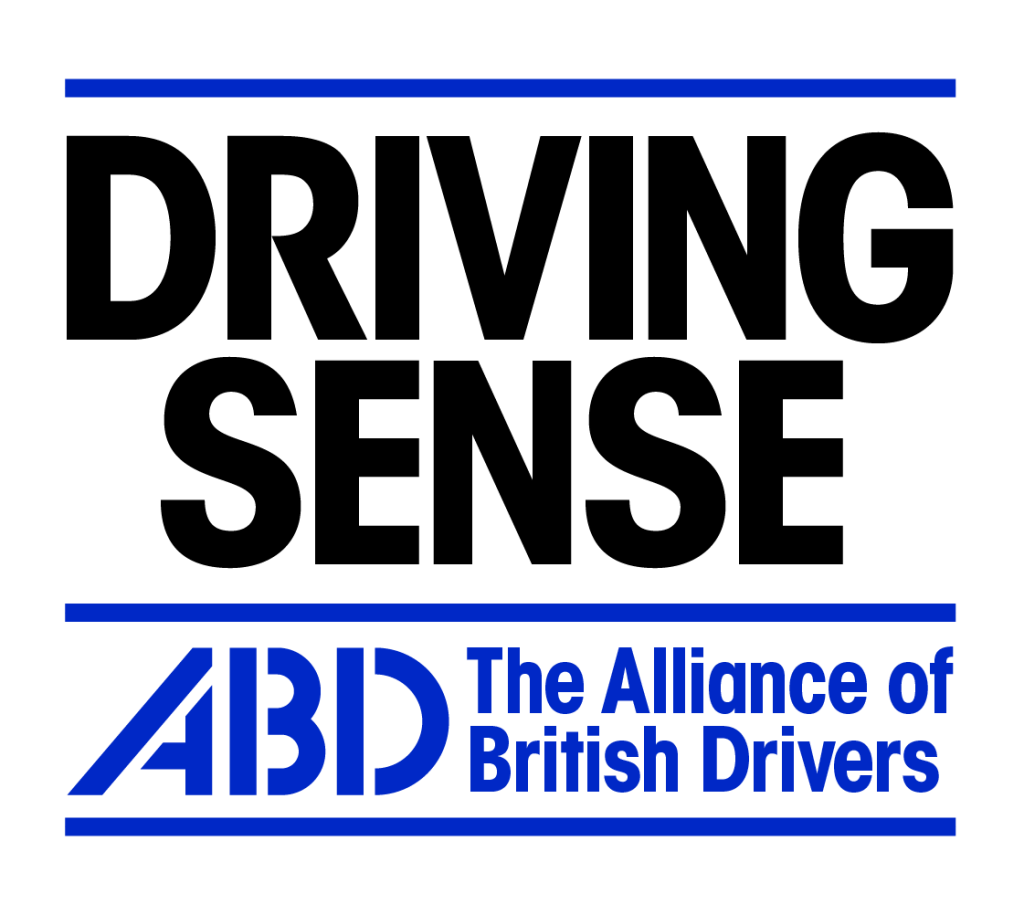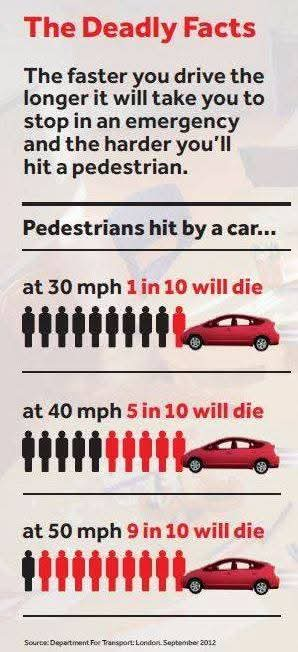This page considers what we have termed ‘everyday crashes’ to distinguish them from ‘KSI Crashes’ in which people are Killed or Seriously Injured. This is because whilst the the attendant circumstances may be different, the principles behind the crashes are the same.
By our definition, everyday crashes involve what was commonly known as ‘driving without due care and attention’ which even the best drivers are guilty of from time to time. Most times they get away with their mistakes but when they don’t a crash occurs.
KSI crashes on the other hand involve reckless or dangerous behaviours with aggravating factors such as drink or drug driving or using a stolen vehicle in the course of crime. These drivers are a menace to society who must be dealt with appropriately
Our wish is to keep people safe from both types of driver and to minimise both types of crash. To do so requires discernment which our package of Five Reforms offers, as distinct from the lazy “one size fits all” approach urging everyone just to kill their speed.
Knowing what we now know about Mind Driving, we can readily see that “driving without due care and attention” occurs when “Speed, Surprise and Space” are out of balance.
The aggravating factors in KSI crashes shed light on WHY they were out of balance but the need to keep all three elements of the Risk Model in balance remains. QED
The Primary Precipitating Factors in Everyday Crashes

This chart compiled by the Alliance of British Drivers needs no explanation. Amongst other things it highlights the minimal contribution, (at just 5%), that exceeding posted speed limits makes to crashes vis a vis other more prevalent factors.

The Mind Driving Proposition
“Almost All Collisions Could Be Avoided
By Any Of The Road Users Involved
If Only Someone Had Seen It Coming!
This Includes Avoiding Someone Else’s Crash
And Refusing To Be a Victim”
To put this assertion to the test we can use the Mind Driving Risk Model to interpret what we see happenning in any number of crash videos found online.
The lens through which to view these videos is whether all the parties involved could have minimised crash risk with reference to the Risk Model, that is:
- by anticipating Surprises,
- by giving Space to danger presented by the risk situation and
- by adusting Speed so as to minimise their time exposed to danger,
thereby keeping all three risk factors in balance.
Example 1 : Driver Crashes Into Side Of Oncoming Vehicle Whilst Turning Right
Matters Arising From This Video. (>>> to edit below here)
- Under the ‘Voices of Reason’ tab, former Chief Constable Paul Garvin provides an overview of the most common causes of crashes in his Force area which confirms the ABD chart (above) from his practical experience. It is well worth reading what he says. He notes that one such cause is the failure of drivers to watch out for oncoming vehicles when turning right which is exactly what happened here.
- In fact, this crash seems to tick at least three of the Stats 19 crash factor boxes, namely ‘failed to look properly’, ‘failed to judge path or speed’, ‘careless, reckless hurried’ and ‘poor turn or maneouvre’.
- Before the ‘speed kills’ mantra took hold it used to be commonplace to say that one or more parties were ‘driving without due care and attention’, an all encompassing term to describe the what we see in this and most other crashes. More useful however would be to get into the habit of analysing all the crash in terms of all three ingredients of the Risk Model.
- In that regard, the driver turning right took the driver coming straght ahead by Surprise. Had that driver be scanning the road properly he would not have been caught out, especially knowing that drivers turning right are a common source of risk. Realising this in his thinking he could then have created Space by moving over to the nearside early instead of staying close to the centre line.
- Absent from this crash is any suggestion that ‘travelling too fast for the conditions’ or ‘exceeding the speed limit’ was a factor. The posted speed limit here was 30mph and as far as we can tell both vehicles were travelling well below it. This is true for around 95% of crashes, which makes a mockery of the bland ‘speed kills’ proposition. A last minute burst of speed by the oncoming vehicle, for example, perhaps taking it over the speed limit even, may have minimised his time exposed to danger and avoided the crash!
Example 2 – To Assume Makes and Ass of U and Me!
In this video the truck driver appears to assume that bacause he is already well into the carriageway, the driver of the white car will let him continue whereas the white car drives clearly assumes that the truck will allow him to proceed.
Matters Arising From This Video.
- The drivers here Surprise each other at a point when Space was aleady close to zero. In those circumstances it is essental to certain what the other driver’s intentions are. If this is not immediately obvious then better for both vehicles to hang back until they were certain what each was going to do, perhaps through eye contact of gesturing.
- Once again, exceeding the Speed limit was clearly not an issue here
Example 3 – Driver Looked But Didn’t See….
Saccadic Masking – Surprise’s Little Known Culprit
Up to a quarter of crashes are of this nature whereby a vehicle pulls out in front of another without apparantly seeing it. But ask most drivers if they can tell you what saccadic masking is and they will probably give you a blank look. Something else for the DVSA to rectify when implementing our Reform 2…..
Example 4 : Child Surprises Driver by Running Out Into His Path
Matters Arising From This Video.
- In this common scenario drivers trained in the Risk Model might first be thinking in terms of Space here being tight because of the vehicles parked on both sides of the street. They will also recognise the ever present risk of Surprise should someone suddenly emerge unseen from between the row of vehicles as this boy in fact did.
- Luckily for the boy the car driver understood that his Speed needed to take account of the increased risk posed by Space being compromise and he kept his Speed low and was able to deal with Surprise. Keeping Speed, Surprise and Space in balance enabled him to stop without hitting the boy since swerving was never going to be an option in this street due to lack of Space.
- Say the speed posted speed limit was 30mph or even 20mph in this street, this would be of lesser relevance to the driver whose primary concern should be to choose a safe speed for the road conditions. A secondary concern should be to comply with arbitrary set speed limits secondary.
- In other words, had he hit the child at 19mph say, it would not be OK to use as his defence that he was driving within the 20mph speed limit if that was too fast for the conditions. i.e in relation to Surprise and Space.
That “Oh Shit Moment”

In their noble quest to reduce causalties the road safety establishment are fond of demonising speed, by pushing messages like this which can be seen as patronising by stating the obvious.
In terms or risk however, these one dimensional messages are meaningless if they dont relate Speed to Surprise and Space which is the real crux of the matter.
In his book ‘How Not To Crash’ Reg Local speaks of the “Oh Shit Moment” – the point when you realise that you might be about to run a someone over and it actually happenning.
Irrespective of the length of time between the realisation and the crash, drivers usually manage to brake. Beacause of this, crashes do not normally occur at the speed limit, or anywhere near them.
Rather than putting out fatalistic messages therefore thinking what would happen if you were to hit a child, sureley the point is to ensure you dont hit them by keeping speed surprise and space in balance.
Example 5 – A Few Words About Blame
- The book ‘Mind Driving’ is jam packed with wisdom. It takes the view that in driving, “Not my fault….” is a particularly reckless frame of mind – and futile too.
- An epitaph of “Innocent Victim”chiselled tenderly in polished granite is by that stage a very empty virtue. Surviving is more important than being “right”.
- Rather the maxim presented near the top of this page should be uppermost in every drivers mind: “Almost All Collisions Could Be Avoided By Any Of The Road Users Involved. Being pre-occupied with who might be to blame will lead you to ignore dangers that you could easily resolve. And to practice a selfish refusal to help others when they need it is self-defeating for your own safety as well.
- The attitude of blaming others (encouraged by insurance companies) is most unhelpful here as well because this is after the event of a crash. Up to that point, the vital thing is to avoid the crash.
- Allocating blame only makes sense when everyones efforts to control the danger have failed. In other words, preventing a crash is more importand than who would be to blame for it.
CONCLUSIONS REGARDING EVERYDAY CRASHES
We can safely conclude that the primary precipitating factors in the overwhelming majority of common crashes are NOT exceeding the speed limit but rather a combination of:
- POOR OBSERVATION,
- POOR HAZARD PERCEPTION, and therefore
- POOR, OR ABSENT, HAZARD RESPONSE – UNTIL IT’S TOO LATE
Mind Driving addresses the skills needed to overcome these shortcomings under the following headings:
- SKILL 2 : SENSE OF DANGER
- SKILL 6 : OBSERVATION
- SKILL 7 : RISK ASSESSMENT AND CONTROL
Reform 2 of the Five Reforms advocates that learner drivers gain a deep understanding of the interplay primarily between SPEED, SURPRISE and SPACE and the necessity to keep all three in balance before they are awarded a full deriving licence.
Blaming exceeding the speed limit for crashes in isolation from surprise and space is moronic because it destroys the Risk Model, but then:
“If the only tool you have in your tololbox is a hammer,
every problem becomes as nail!”.